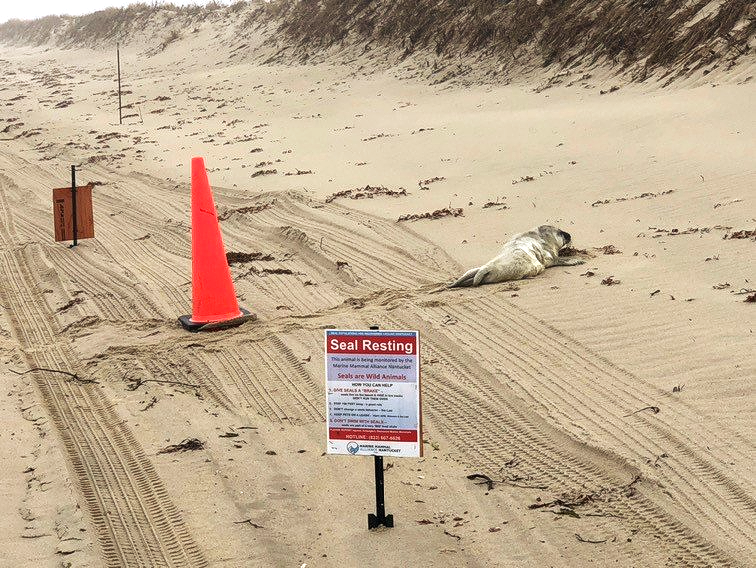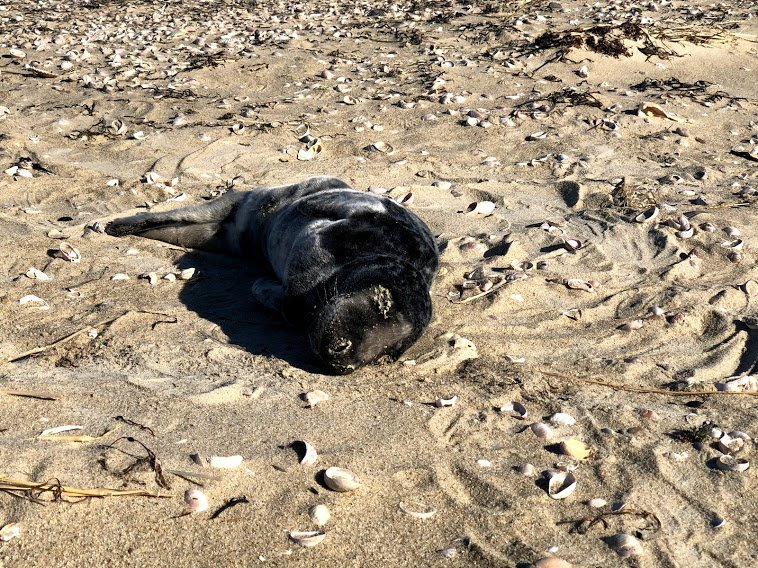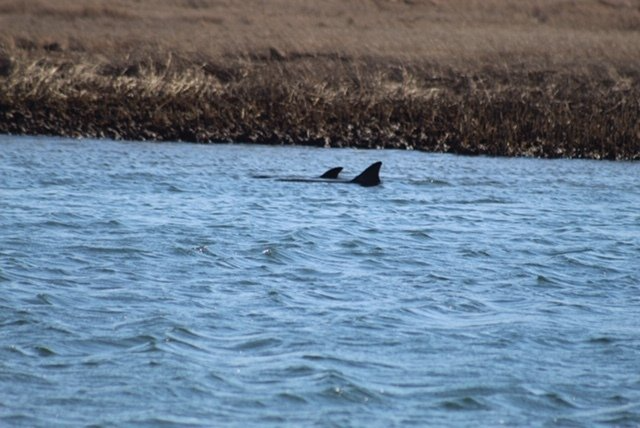HOTLINE (833) 667-6626 – WHAT DO I DO UNTIL HELP ARRIVES?
WHAT DO I DO UNTIL HELP ARRIVES?
What is stranding? Under the Marine Mammal Protection Act:
- A live marine mammal on the beach and unable to return to the water
- A live marine mammal on the beach in apparent need of medical attention or assistance
- A live marine mammal in the water but unable to return to its natural habitat under its own power or without assistance
- A deceased marine mammal on a beach or shore.
It is normal for seals to haul out onto the beach to rest and digest. Pups spend the first few weeks of their lives on the beach and mom will return regularly if the area is undisturbed by humans. It is NOT normal for any other marine mammal to be on the beach or in shallow water.
Federal law ( the Marine Mammal Protection Act) prohibits disturbing, flushing, harming, touching or changing the behavior of any marine mammal. Only MMAN’s trained team have permission, through NOAA, to approach, assess, and assist injured or stranded marine mammals. MMAN holds a Stranding Agreement contract through NOAA Fisheries allowing us to approach and aid stranded marine mammals.
What to do if you see a SEAL on the beach:
CALL OUR HOTLINE 1-833-667-6626 FOR CONSULTATION AND REPORTING.
- Stay back 150’ if possible and advise others to do the same. Any closer will stress the animal. Too close and you could be bitten or come in contact with zoonotic disease. Seals are wild animals.
- Keep dogs on leash and at a safe distance for seal and dog.
- Seals haul out of the water regularly to rest, digest, sunbathe.
- Is the animal alive or dead?
- Take photos and send to the responder you reach via hotline. Give the beach access number (on signage at the entrance to the beach).
- Drop a pin using Google maps and send to the hotline operator.
- Take note of
- Entanglement – is there netting, monofilament or other material caught on the animal?
- Notable physical injury (shark or propeller wounds)
- Position (is the seal on its belly or side?
- Activity (making banana shapes, hissing, waving, vocalizing)
- Difficulty breathing
- Body condition (plump, thin, hips showing, eye discharge, injuries)
- Fur (molting, what is the color - if its creamy white, its most likely a new born pup with lanugo)
- Hotline operator will advise you based on this information and send a response team if deemed necessary.
- REMEMBER: it is the LAW, not to change the animal’s behavior in any way. This includes flushing it back into the water, distracting it from resting or staying close enough for it to keep it watching you.
What to do if you see a cetacean (dolphin, porpoise or whale) on the beach:
CALL OUR HOTLINE 1-833-667-6626 ASAP - THESE ANIMALS ARE STRANDED AND NEED HELP!
- Stay back 150’ if possible and advise others to do the same. Any closer will stress the animal.
- Keep dogs on leash and at a safe distance.
- Is the animal alive or dead?
- Take photos and send to the responder you reach via hotline. Give the beach access number (on signage at the entrance to the beach).
- Drop a pin using Google maps and send to the hotline operator.
- Take note of
- Entanglement – is there netting, monofilament or other material caught on the animal?
- Notable physical injury (bleeding? wounds?)
- Position and location (on its side?)
- Activity (breathing through blow hole, flailing tail, vocalizing)
- Difficulty breathing
- Hotline operator will advise you based on this information and send a response team if deemed necessary.
- REMEMBER: it is the LAW, not to change the animal’s behavior in any way. This includes touching or trying to pull/push a dolphin back into the ocean, or staying close enough to cause further distress for images. Please give them space until help arrives.

Marine Mammal Alliance Nantucket
P.O. Box 3625
Nantucket, MA 02584
MMAN may contact you via SMS in order to request additional information regarding an injured animal or follow-up conversation if your cell phone is provided. MMAN will never share your personal information (name, address, e-mail, phone number) collected via website, form, social media or text with anyone. Information is collected for the sole purpose of communication regarding animals in need, volunteer opportunities or class registrations. To Opt-Out of text messages, text STOP.
©2023 Marine Mammal Alliance Nantucket
website by moor.studio
CONTACT US
Please call the HOTLINE for ALL wildlife related reports or emergencies
HOTLINE (833) 667-6626
For all non-animal response communications
Please DO NOT report animals ashore here. Call 833-667-6626
team@nantucketmman.org
For all volunteer and education opportunities





